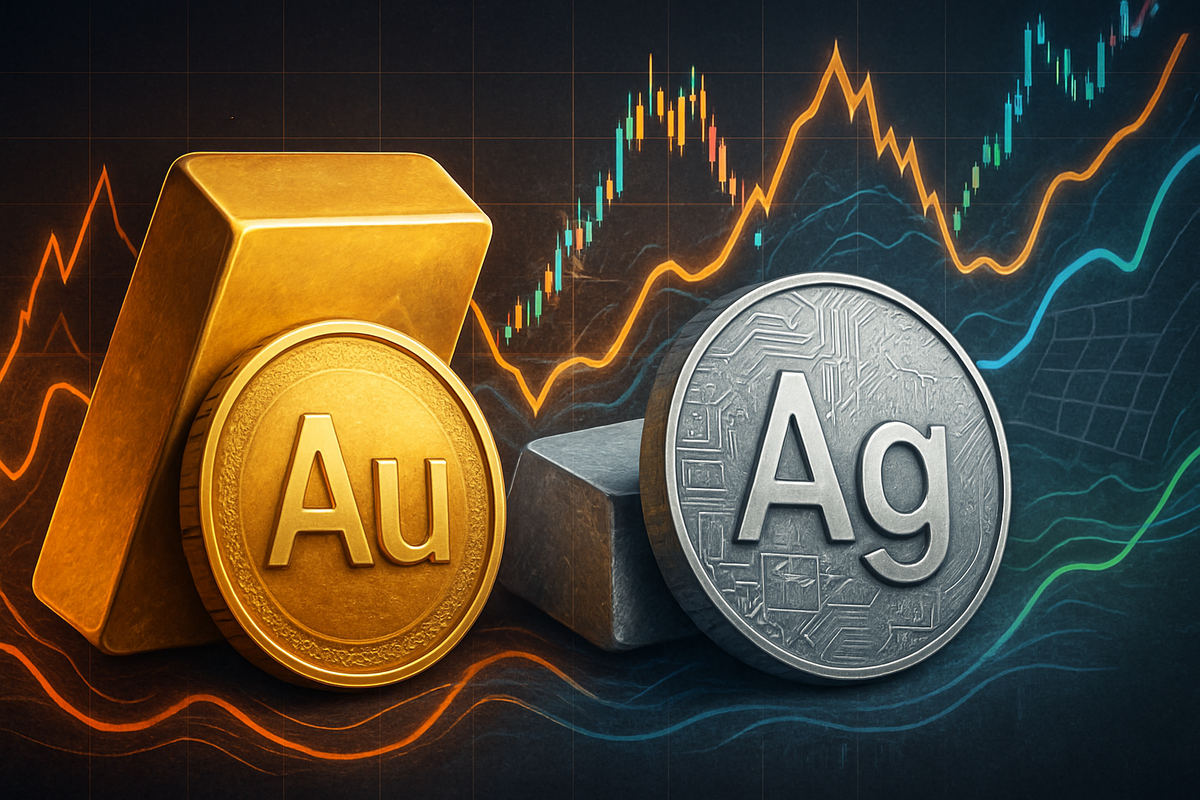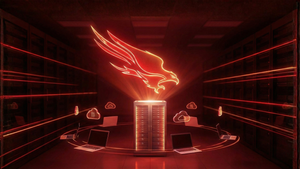
The precious metals market has been a whirlwind of activity in 2025, with both gold and silver experiencing unprecedented rallies that pushed them to historic highs, only to be followed by sharp corrections and significant volatility in October. As of late October 2025, investors are grappling with a complex global economic landscape, weighing the traditional safe-haven appeal of gold against the dynamic industrial demand and potential for higher growth offered by silver. This period of intense fluctuation has sparked a renewed debate among financial experts: which metal presents the more compelling investment prospect in the current climate?
A Rollercoaster Ride: Historic Peaks and Abrupt Pullbacks Define October 2025
The year 2025 has been nothing short of spectacular for precious metals. Gold saw a remarkable ascent, surging over 50% and breaching the $4,000 per ounce mark for the first time on October 7, 2025. It reached an unprecedented all-time peak of approximately $4,379 per ounce on October 17, with U.S. gold futures hitting a record $4,391.69 per ounce, marking its strongest weekly gain since December 2008. Silver's performance was equally impressive, surging over 50% in the first nine months of 2025 and reaching a 14-year high above US$44 by September 22. Since the start of the year, silver prices have surged by a massive 78.73%, closing above $50 per ounce – a price point not seen in over four decades. On October 17, 2025, silver hit a multi-year high of $54.49 and an all-time intraday high of $54.47 per ounce.
However, the latter half of October 2025 brought a dramatic shift. Following their record highs on October 17, both metals experienced significant profit-taking and sharp corrections. Spot gold retreated by 2.00% to settle at $4,236.57, slipping below $4,300. Silver also saw a dramatic fluctuation, falling 1.7% to $53.32 after its record high. By October 21-22, the market witnessed substantial plunges, with gold falling as much as 6.3% intraday and silver up to 8.7%, marking their steepest single-day declines in over a decade for gold and since 2021 for silver. This "correction" phase is largely attributed to an overheated market undergoing widespread profit-taking and technical adjustments.
Several converging economic and geopolitical forces have been the primary drivers behind these price movements. Expectations of aggressive monetary easing and potential quarter-point rate reductions by the Federal Reserve have significantly boosted the appeal of non-yielding assets like gold and silver, as lower interest rates decrease the opportunity cost of holding them. Persistent inflation concerns continue to fuel demand, positioning both metals as crucial hedges against the erosion of purchasing power. Geopolitical tensions, including ongoing conflicts in Eastern Europe and the Middle East, trade disputes, and political unrest, have further amplified safe-haven demand. A weaker U.S. dollar, which has fallen approximately 9% in 2025, has also made dollar-denominated precious metals more affordable for international buyers. Furthermore, global central banks, particularly in emerging economies, have been consistently accumulating gold to diversify foreign reserves away from the U.S. dollar, providing a solid foundation of institutional demand.
Silver's unique position as both a monetary and industrial metal adds another layer of complexity to its price dynamics. Its increasing use in green technologies, such as photovoltaic solar cells and electric vehicles (EVs), as well as in electronics, is a significant demand driver. The EV industry alone accounts for 2.9% of global silver demand, and the solar industry for 16%, growing 14% annually over the past decade. This robust industrial demand, coupled with persistent supply deficits since 2021 – total supply has declined over the past decade while demand outpaces production – creates a favorable structural imbalance for higher silver prices. Regulatory impacts and geopolitical risks in key mining regions further exacerbate these supply constraints.
Mining Giants Face Shifting Sands: Who Wins and Who Loses?
The volatile swings in gold and silver prices have a direct and profound impact on the public companies involved in their extraction and production. Mining companies, particularly those with significant exposure to either gold or silver, see their profitability and stock performance closely tied to these market movements. While a rising tide lifts all boats, the recent corrections present both challenges and potential opportunities.
Major gold mining companies like Barrick Gold (NYSE: GOLD) and Newmont (NYSE: NEM) typically benefit immensely from sustained high gold prices. Their revenues swell, profit margins expand, and cash flows improve, often leading to increased shareholder returns through dividends or buybacks. However, sharp corrections, like those witnessed in October, can trigger significant pullbacks in their stock prices, as investors price in reduced future earnings. These companies, with their large-scale operations, are often seen as more stable investments within the precious metals sector, but they are not immune to market sentiment. Their ability to manage operational costs, maintain healthy balance sheets, and strategically hedge their production becomes crucial during periods of volatility.
On the silver side, companies such as Pan American Silver (NASDAQ: PAAS) and Wheaton Precious Metals (NYSE: WPM), which operates a streaming and royalty business model, are particularly sensitive to silver price movements. Given silver's higher volatility compared to gold, silver miners can experience more dramatic swings in their stock performance. When silver prices surge, these companies can see disproportionately higher percentage gains due to their smaller market capitalization and the levered nature of mining operations. Conversely, during sharp downturns, they may experience more significant losses. For companies with substantial industrial demand exposure, a robust global economy supporting manufacturing and green technology adoption can provide a strong tailwind, independent of purely monetary demand. The ongoing supply deficits in the silver market could further benefit these producers by creating a sustained high-price environment, provided they can increase production efficiently.
Moreover, companies with diversified portfolios, mining both gold and silver, or those involved in other base metals, might have a more buffered response to single-metal price fluctuations. For instance, a company with significant copper or zinc production alongside silver might find some stability from the industrial demand for base metals, even if silver faces a temporary dip in investment demand. Investors will be closely scrutinizing the cost structures, production guidance, and hedging strategies of these mining giants to determine their resilience and potential for growth amidst the current market turbulence. The recent "correction" could be seen as an opportunity for well-capitalized miners to acquire smaller, distressed assets, further consolidating the industry.
Beyond the Bar: Broader Implications of Precious Metals' Surge
The dramatic price movements in gold and silver extend far beyond the immediate financial markets, rippling through various industries and signaling broader economic trends. Gold's role as the quintessential safe-haven asset underscores persistent global anxieties, whether economic uncertainty, geopolitical instability, or inflationary pressures. Its recent surge fits into a pattern observed during periods of heightened risk, where investors flock to assets perceived to hold their value when traditional financial instruments falter. This trend highlights a growing lack of confidence in fiat currencies and government bonds, pushing central banks and institutional investors to diversify their reserves with physical gold.
Silver's dual nature as both a monetary metal and a critical industrial commodity means its trajectory offers insights into both financial sentiment and the health of the global economy. The strong industrial demand for silver, particularly from burgeoning green technologies, positions it at the nexus of the energy transition. The increasing adoption of solar panels, electric vehicles, and advanced electronics relies heavily on silver's unique conductive properties. This sustained demand from industries striving for decarbonization creates a structural floor for silver prices, distinguishing it from gold, which is primarily driven by investment and jewelry demand. Any significant shifts in government policies supporting renewable energy or technological innovation will have direct implications for silver's market.
Historically, periods of significant inflation or economic instability have seen both gold and silver perform strongly. The current environment, characterized by persistent inflation concerns and aggressive central bank monetary easing expectations, mirrors some aspects of the 1970s and early 2000s, where precious metals saw substantial gains. However, the sheer scale of the 2025 rallies, particularly gold breaking the $4,000 barrier, sets a new precedent. Regulatory bodies might begin to scrutinize the derivatives markets for precious metals more closely if volatility continues, potentially leading to new rules aimed at stabilizing markets or preventing excessive speculation. The continuous accumulation of gold by central banks, especially from emerging economies, also signals a long-term strategic pivot away from dollar dominance in global reserves, a trend with profound geopolitical implications.
The Road Ahead: Navigating Opportunities and Challenges
Looking ahead, the precious metals market is poised for continued dynamism, with both short-term volatility and long-term growth possibilities. For gold, the immediate future hinges on the Federal Reserve's actual policy decisions regarding interest rates and the trajectory of global inflation. If the Fed proceeds with aggressive rate cuts, the opportunity cost of holding non-yielding gold will decrease further, likely providing another boost to its price. Geopolitical developments, particularly any escalation or de-escalation of conflicts, will also heavily influence safe-haven demand. Short-term, analysts suggest that the recent correction could be a "pausing" phase, potentially offering entry points for long-term investors. Long-term price targets for gold are ambitious, with projections ranging from $4,400-$4,500 per ounce by year-end 2025 and potentially reaching $5,000 to $10,000 by 2030, driven by persistent inflation, economic uncertainty, and central bank demand.
Silver's outlook is equally compelling, though with a higher degree of volatility. Its dual role means its future is tied to both monetary policy and industrial growth. The continued expansion of green technologies, coupled with persistent supply deficits, forms a powerful bullish argument for silver. As the world transitions to cleaner energy and more advanced electronics, silver's industrial demand is expected to remain robust, potentially outpacing supply for the foreseeable future. Short-term, like gold, silver may see further corrections, which some experts view as a "once-in-a-decade opportunity" for unprecedented affordability for long-term gains. Long-term, silver is forecast to continue its ascent, potentially reaching $60-$75 per ounce by year-end 2025 and possibly exceeding $100 per ounce by 2035.
Investors should consider several scenarios. A continued dovish stance by central banks globally, coupled with ongoing geopolitical instability, would likely favor both metals, with gold providing stability and silver offering higher percentage growth. Conversely, a rapid resolution of geopolitical tensions or a stronger-than-expected economic recovery that leads to hawkish monetary policies could temper the precious metals rally. Strategic pivots for investors might involve maintaining a diversified portfolio, with a core allocation to gold for stability and a more tactical, potentially larger, allocation to silver for growth potential, especially given its current relative undervaluation compared to its historical highs. Market opportunities may emerge during dips, allowing for strategic accumulation.
Navigating the Golden and Silver Paths: A Strategic Outlook
The year 2025 has cemented gold and silver's roles as crucial components of a diversified investment portfolio, particularly in an era defined by economic uncertainty and geopolitical flux. The unprecedented rallies earlier in the year, followed by sharp corrections in October, underscore the inherent volatility of these markets but also highlight their potential for significant returns. Gold, the traditional ultimate safe haven, continues to offer stability and acts as a primary hedge against inflation and currency debasement. Its consistent demand from central banks and its historical performance during turbulent times make it an essential asset for wealth preservation.
Silver, while more volatile, presents a more dynamic opportunity for growth. Its dual nature as both a monetary metal and a critical industrial commodity, especially its increasing demand from green technologies and electronics, provides a powerful structural tailwind. The persistent supply deficits in the silver market further strengthen its long-term investment case, suggesting that its price could see greater percentage gains than gold during bull markets. Experts, including those cited by MarketMinute, increasingly believe silver has the potential to outperform gold in terms of percentage gains in the coming months and years, especially given that it is still significantly below its inflation-adjusted all-time highs.
Moving forward, the market will be keenly watching central bank policies, particularly those of the Federal Reserve, regarding interest rates. The trajectory of global inflation, the resolution or escalation of geopolitical conflicts, and the pace of industrial adoption of silver in emerging technologies will also be critical factors. Investors should remain disciplined, considering the recent corrections as potential entry points for long-term positions rather than signals of a sustained downturn. A balanced approach, recognizing gold's stability and silver's growth potential, may be the most prudent strategy. The current market turbulence, while challenging, is also presenting what many analysts are calling a "once-in-a-decade opportunity" for strategic accumulation in precious metals.
This content is intended for informational purposes only and is not financial advice


















